Blog monetization is the process of turning your blog content and traffic into revenue. In other words, it’s how you make money blogging or earn passive income from your writing. This guide explains how to monetize a blog in a step-by-step manner, with practical examples and tips for both beginners and experienced publishers. We’ll focus primarily on display advertising networks (like Google AdSense and Adsterra) as an easy, evergreen way to start earning.
TL;DR: How to monetize a blog in 2025
- “Make money blogging” means earning from the traffic and content of your own blog.
- The easiest way to start is with ad networks like Adsterra or AdSense: you place ad codes and profit from views, clicks, and conversions.
- Different ways to monetize a blog include affiliate marketing, sponsored posts, selling digital products, email marketing, and offering services.
- New bloggers can make money early if they drive steady and decent traffic, along with quality content.
- A mix of revenue sources (advertisements, affiliate links, donations) can supercharge earnings.
- Both traditional and AI-powered search engines respect valuable, trustworthy content.
- Long-term success depends on SEO (incl. AI-driven methods), audience trust, and adapting to new ad formats, such as In-Page Push.
Advantages of building an online business from a blog
A primary advantage of building an online business is passive income. By simply hosting advertisements or affiliate links on your content, you can gain money whenever readers visit your site.
Advertising (Popunders, In-Page Push, etc.) is considered one of the best ways to profit from a website. Throughout this article, we’ll show how popular ways of monetizing content provide a steady revenue.
What blog monetization is and why it matters
Monetizing a blog is owning an online business: you find ways to generate income from posting content, pursue your money-making goals, and measure the results. Essentially, any way that makes sense and converts your blog into cash counts as monetizing.
Monetizing a blog is important because it helps you develop a strong personal brand, cover costs, reward your effort, and even find a side hustle or found a bigger business.
How much do bloggers make?
Bloggers can make $100 or $10,000 per month. Revenues vary from country to country and depend on the monetization strategy chosen. For example, Wix bloggers get on average $103,446 annually (as of inner Wix stats). Adsterra publishers (including those who monetize Wix websites) can gain $10,000 per month. Others hit $33K revenues by selling websites (aka help others start a monetized blog) with Adsterra ads.
Even if you make $50 or $100 monthly, it can become a decent addition to your budget. Here’s why understanding techniques and their specifics can help you create a successful blog and make money online steadily from your target audience.
According to Surgegraph, bloggers’ hourly rates are heavily linked to their experience.
| Blogger Experience | Hourly Rate |
| Beginners | $25 – $75 |
| Pros | $100 – $300+ |
| Project-based | $500 – $5,000 |
Assessing your blog’s readiness for monetization
Before you jump into making money, ensure your inventory is ready. Think of it as checking your blog’s health and growth before including revenue tools. Three key areas to assess are content quality, audience potential, and technical specifics.
Is my blog ready for monetization? Checklist
| Area | Checkpoints | Recommendations |
|---|---|---|
| Content Quality & Niche | ✔️ You have several well-written, high-quality posts ✔️ Valuable content (it match audiences’ interests) ✔️ Clear niche or market segment (not too broad or narrow) ✔️ Articles show expertise, accuracy, and trustworthiness (E-E-A-T) | ✅ Pick a niche you enjoy and know well ✅ Stay consistent in tone and topic ✅ Update outdated posts regularly ✅ Ensure your copy reflects your personality (for influencers) |
| Audience & Exposure | ✔️ Steady visitors from search or social media ✔️ Exposure: at least a few hundred monthly pageviews ✔️ Established traffic sources (organic, paid, web, social media following) ✔️ People engage via shares, comments, or subscriptions | ✅ Use Google Analytics & Search Console ✅ Offer PDF downloads or extra content to collect emails ✅ Embed call-to-actions to encourage shares or sign-ups ✅ Extend SEO strategy with AI-search optimization (tables, FAQs, checklists) |
| Technical Readiness | ✔️ Mobile-friendly, fast-loading blog ✔️ Easy-to-navigate design ✔️ Essential pages (Homepage, Contacts, Privacy) ✔️ Keyword-optimized content with SEO basics | ✅ Use tools like PageSpeed Insights & Mobile-Friendly Test ✅ Install an SEO plugin (like Rank Math or Yoast) ✅ Organize posts with categories and internal links |
| Bonus: Platform’s readiness | ✔️ Your CMS supports the tools you picked to make money online | ✅ Use Blogger or WordPress.org to monetize as they support any code embeds |
When is the right time to start monetizing your blog?
The right time to begin making money is unique for every blogger. There’s no single “magic number” of posts. Experts advise waiting until you have a significant audience before adding advertisements or sponsorships. We suggest starting as early as possible and learn on the go.
Ron Stefanski, a founder of a 6-figure online business, says about his experience: “When I first began my blogging journey back in September 2014, I only made $15.50. Fast forward to today, after more than 8 years of hard work and persistence, I’ve built a business that now brings in over $15,000 each month.”
So, your persistence and goals mean a lot. Monetizing early in a low-key way can be a nice move to learn along the journey. Basically, many bloggers start with advertising platforms and then scale their presence on the internet by selling specific products or providing VIP consulting sessions available for a purchase.
If you do decide to wait a bit, consider 1,000–5,000 monthly pageviews as a green light for advertisements, or a few hundred email subscribers for sponsored newsletters.
10 best ways to monetize your blog on the internet
To monetize a blog effectively, form strong knowledge of top workable ideas for your niche. The best strategy usually involves a mixture of these ideas but always demand building a strong relationship with your audience. Here are ten monetization strategies for blogs, in no particular order, that writers use as ideas for making money in 2025 and beyond.
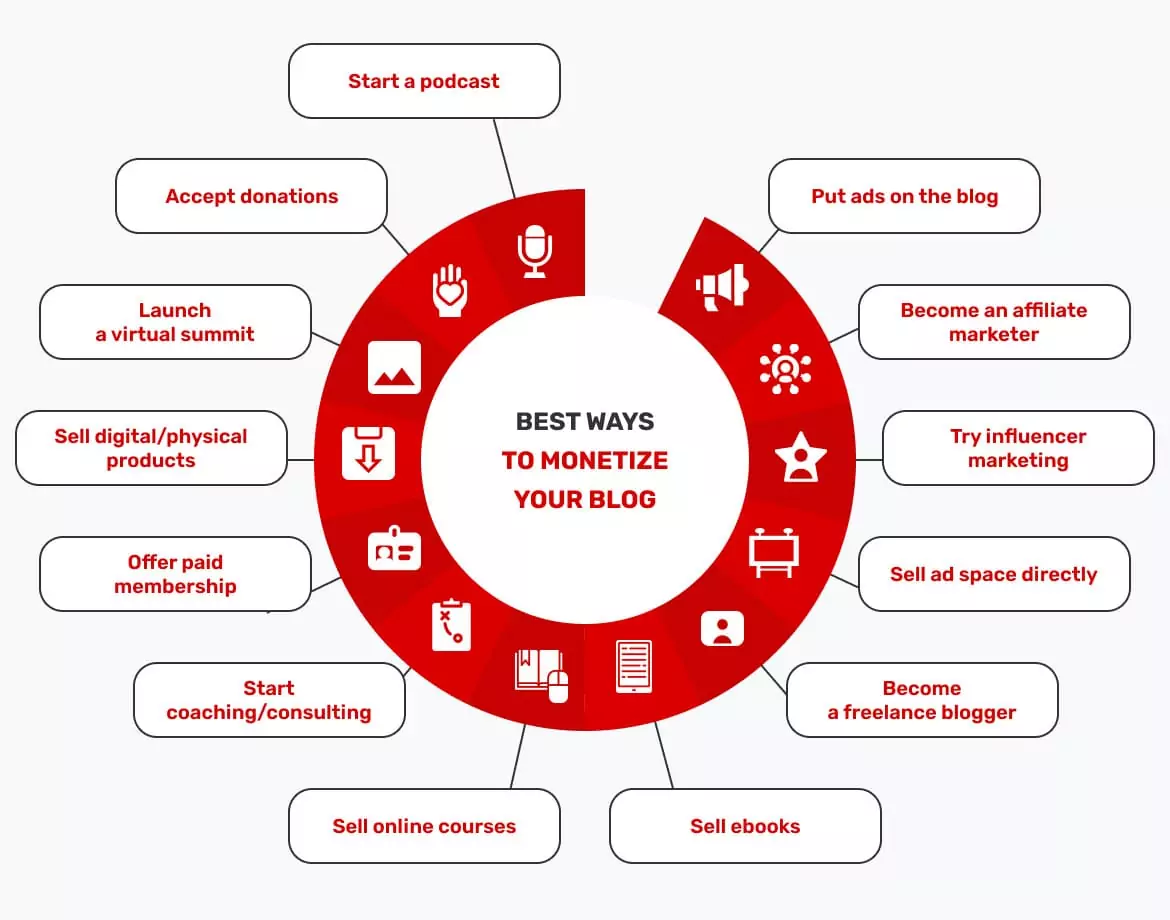
1. Display advertising (Ad networks like Adsterra and AdSense)
Monetizing ad space on your website is a classic way that requires little setup. It becomes even simpler if you join an advertising platform. Google AdSense and Adsterra are among the most well-known (easy to start, regular payouts, transparent results), but there are many alternatives.
Adsterra is a top-performing CPM ad network that accepts new publishers immediately. To monetize, you register as a publisher and generate a script to place on your website. You get paid for advertisement views (per 1,000 impressions), per clicks, and conversions.
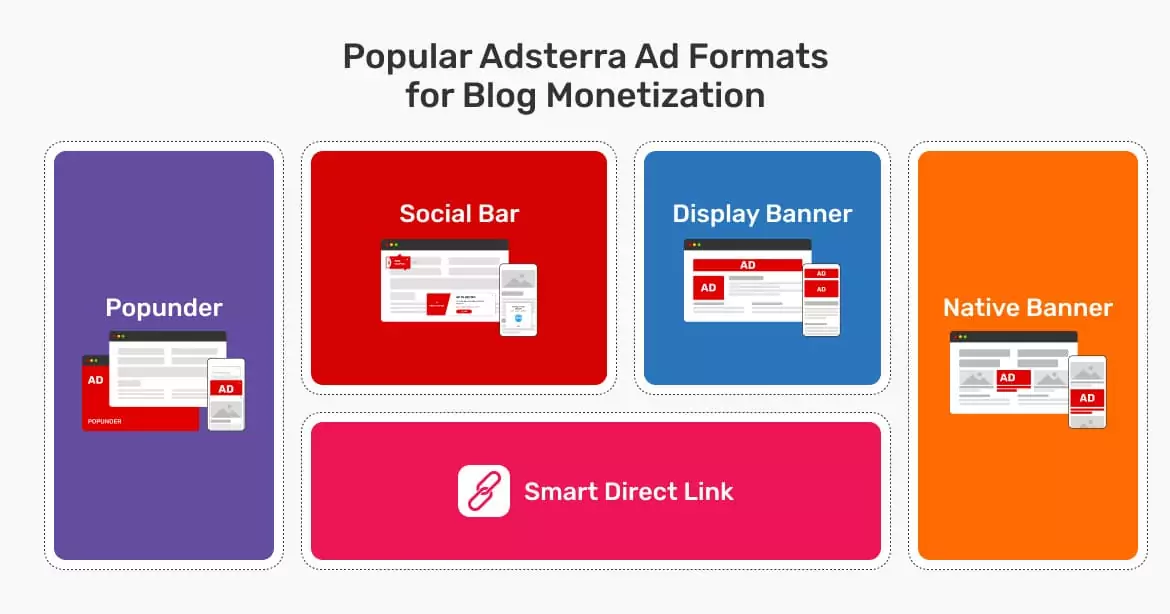
Display ads include Popunders, Social Bar (with Interstitials), Native formats, Banner Ads, and Smartlink. The more blog traffic you have, the more ad views you send to Adsterra. Conversions are paid much higher. So, if a user buys something after watching ads, your CPM rates become more lucrative and jump to $15-50.
The screenshot below illustrates a $15 CPM gained by an Adsterra publisher who runs a vlog about video games and writes definitive tutorials in his blog.
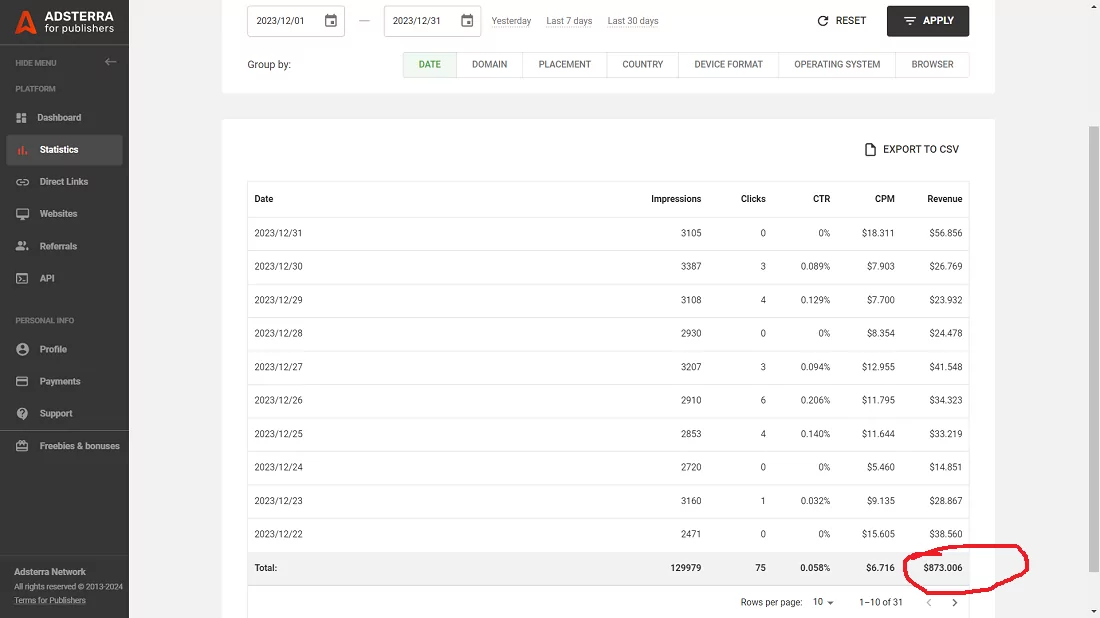
Ad platforms are evergreen because as long as people visit your blog, you keep monetizing. Just be mindful to balance ad placements. Your readership shouldn’t be overwhelmed by commercials.
Affiliate marketing (commission-based links)
Affiliate marketing is promoting products or services and getting a commission for each sale. This is feasible thanks to unique affiliate links in your blog posts. Sales made thanks to each link are tracked, so you get paid fairly.

Amazon Associates is a well-known program in this field. You join the Program and include a special Amazon affiliate link to a review of a gadget or a book overview. When people click the link and buy these items, you get a percentage.
Alternatively, you can partner with specific programs (like travel bookings, education, or software). That’s an immediate start with almost no requirements. If you run a gaming blog, you might include affiliate links to the latest game’s reviews. If you post listicles, several links can be included. No requirements for the number of such links or affiliate programs you join, by the way.
To succeed as an affiliate, produce valuable content that naturally includes product recommendations. Persuade potential customers with real features and advantages. Always disclose affiliate links to your audience. Be professional and honest when comparing services or goods. Remember to choose what fit your niche and audience needs.
Sponsored posts or commercial sections inside blog posts
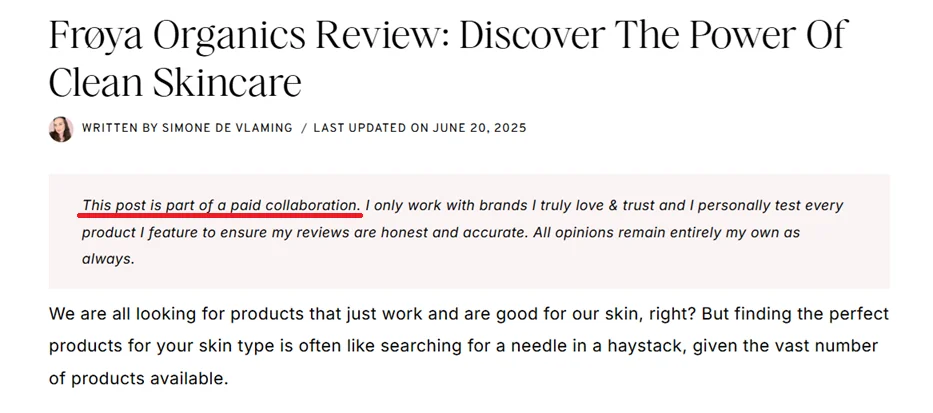
Brands can pay you to write about their services. This often takes the form of a paid review or sponsored post. You’ve seen this lots of times: bloggers write about a new iPhone or Xbox that is about to be marketed. Cinema enthusiasts create reviews on movies just released and reach out to hungry blockbuster fans.
To partner with brands, you need to have an established audience in a particular sphere. Companies may approach you, but you will also need to seek sponsorships through platforms that connect brands with bloggers proactively.
Sponsored posts must be labeled for transparency. You can set a price for each piece of copy. Usually, micro-influencers charge $50–$100 per post (about 10,000 followers). As of Ahrefs, the average cost of a paid guest post is $77.8.
To monetize this way, polish your communication skills and learn to pitch yourself to relevant brands. Creating sponsored posts is a powerful technique, and it brings sustainable payouts for your writing, storytelling, and marketing knowledge.
Selling eBooks and online courses
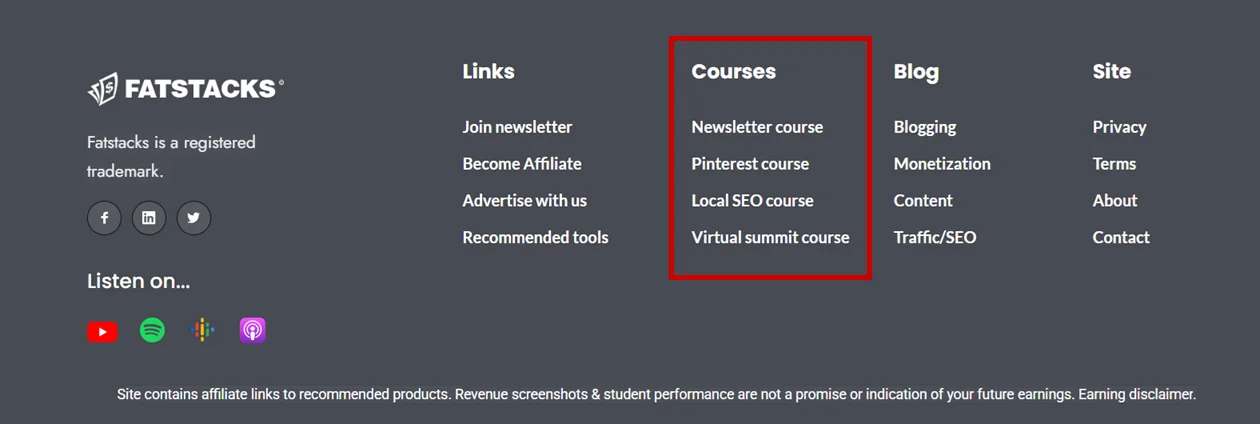
According to Global News Wire, the e-learning market is expected to reach around $325 billion in value by 2025. If you have expertise, turn to creating online educational materials. This could be eBooks, online courses, or workshops, or even specific products like workouts. People are often willing to pay for in-depth guides or learning experiences. A blogger might expand a series of posts into a whitepaper, or eBook or launch a video course on the subject.
Educational content provides cash multiple times once launched, being a great way to monetize once you build expertise from blogging. However, it involves some legwork, writing or recording the course, and setting up a payment platform. Many successful bloggers convert their expertise into educational products. So don’t hesitate to offer an online course even if you only have several PDF checklists.
Email marketing & newsletters
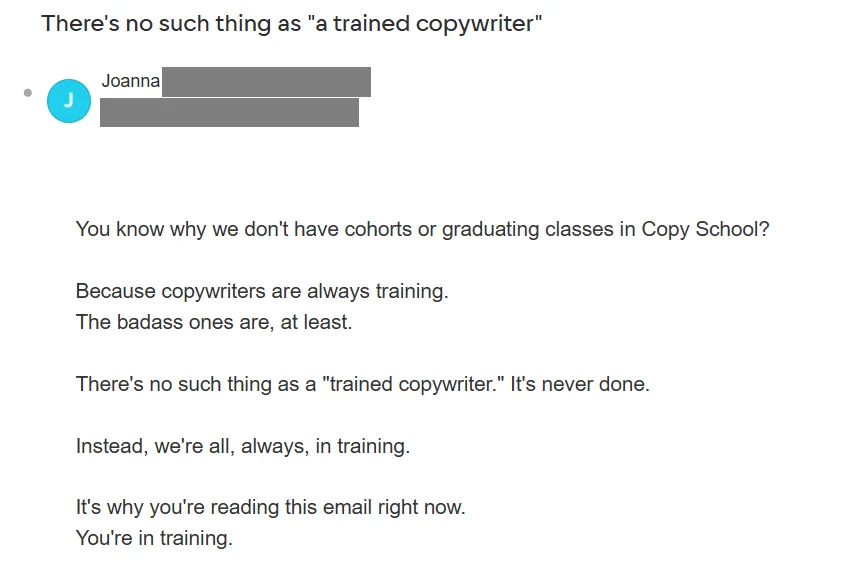
Building an email list is still one of the most lucrative businesses for a blogger. With multiple subscribers, you can use your newsletter to promote your own products, affiliate offers, or even run sponsored emails.
The first step is to feature affiliate products related to your latest blog topic. Next, you can offer a course to your readers. Some bloggers send special deals only to email subscribers, attracting more potential customers.
Always provide value in each email (trends, stats, instructions, etc.), not just promotions. Over time, a large, engaged user base can drive consistent sales. As a bonus, tools like MailChimp or Selzy make it easy to monetize through email forms and automated trigger mailing.
Pro tip: Give away freebies. From time to time, you offer people access to free tutorials or guides in exchange for signing up or completing other activities. People will remain happy and more loyal to your paid offers, contributing to your reputation growth.
Memberships or premium content

Some blogs offer paid membership tiers for exclusive content. If your general blog content is open to everyone, you can create VIP or professional assets for paying subscribers. Run a private newsletter, members-only articles, a forum, or a private Telegram channel as an extension of your blog.
The idea of memberships works if you have a loyal audience who needs your advice and your reputation is solid. You could bundle several benefits: exclusive videos, direct Q&A, or in-depth reports. Tools like Patreon or Memberful can help manage such subscriptions.
Membership is a form of long-term side job. Once set up, it deepens engagement and delivers steady revenues. Just ensure the exclusive content is truly valuable and problem-solving.
Selling services and consulting

If you have professional skills, convert your blog to a portfolio. Offer consulting services, training sessions, expert talks, events, or freelance work. An SEO portfolio might lead clients to employ you for website optimization. A blog by an entrepreneur can collect emails of those willing to have a one-to-one session or a professional audit.
Many bloggers have turned their knowledge into high-paying businesses. It’s often enough to list your freelance writing or paid guest post services on their sites. To monetize this way, create a Services page outlining what you offer (e.g., consulting, design, writing). Provide feedback from your clients.
Pro tip: Be sure to price your services appropriately; your audience can justify higher rates if you provide results. If you have a background as a freelance writer, marketer, or designer, mention it. This money-making way is highly rewarding, so keep in mind that you’re directly paid for your time.
Freemiums
Freemiums are fully-fledged trials of games, software, or digital tools that bloggers can monetize. How do you get them? Some bloggers create or develop mobile apps themselves, while some of them partner with emerging brands and ask to promote a limited trial of their software. They get commissions for new signups and then continue to receive a percentage of their referrals’ payments for a period of time.
Ensure you collaborate with credible brands that won’t charge your leads right after they sign up. Always check if the promo codes are active, and be ready to reply to negative feedback from users.
Selling physical products (merchandise)
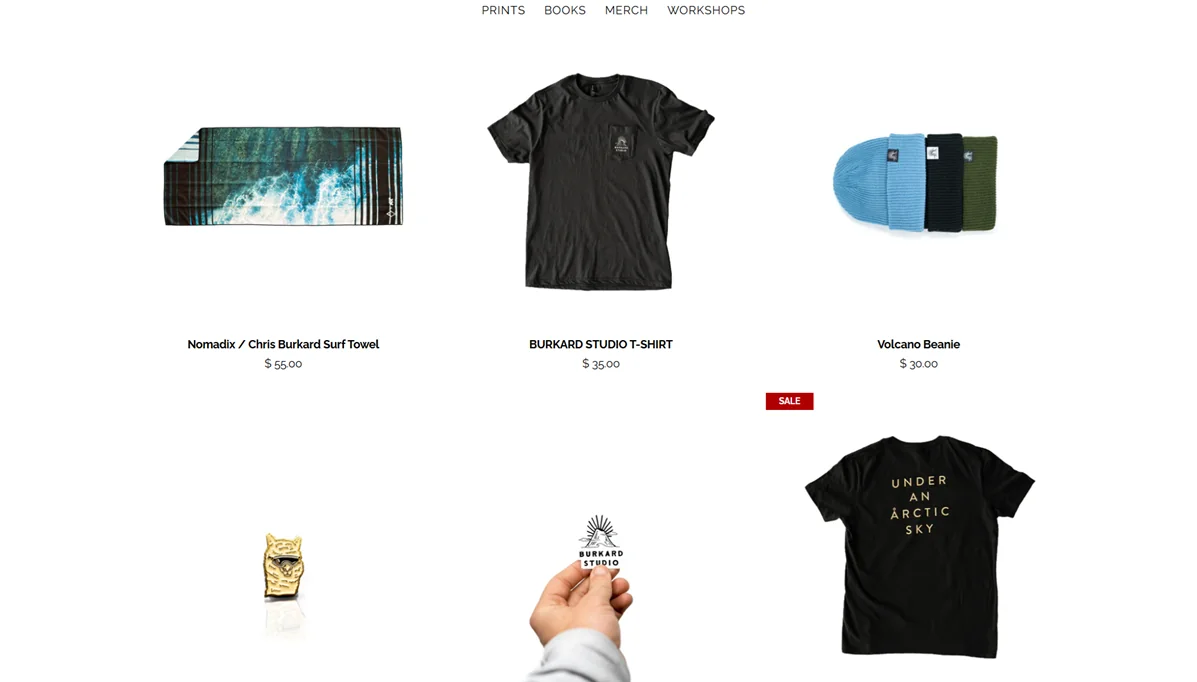
You can create your own products and sell them via your blog. Travel bloggers often sell branded maps or T-shirts. Creative bloggers might sell printables or digital designs. Chris Burkard, an artist and photographer from California, has become an iconic figure for those who treasure beauty and minimalism. His online store (in the photo above) offers stickers, outerwear, books, workshops, camera bags, and photo editing presets
Thanks to print-on-demand services (e.g., Printify), selling merchandise is easy without additional investment. You design a logo or slogan, upload it to a POD platform, and link it from your blog. Each sale brings profit, but you also pay the POD platforms for their services a small cash. Just remember that physical products also require handling, customer service, and shipping.
If you make money this way, you obviously do more work, but it sets your brand apart and helps open new sources of revenue (future collaborations). Always ensure any product ties in with your blog’s theme. A sports blog could sell workout gear or guidebooks. Promoting these products can be done through your posts or partnerships.
Direct advertising and sponsorship opportunities
Finally, once your blog is well-known, you can sell ad space directly. You set your own price and start working with advertisers (companies or individuals). Direct advertising is usually more profitable as there’s no intermediary here. However, they require massive, loyal audiences and a professional media kit.
Another option is seeking larger sponsorships. Companies may support a series of posts or a sidebar banner. To find such opportunities, you can refer to LinkedIn or email advertisers directly. This may not be a starter strategy, but it’s a “final way” to scale when your blog becomes a venture. Building these partnerships brings high-paying advertisers onto your site.
Each of these methods can bring in money from your blog. A mix of techniques is often the best solution. You can place advertisements and affiliate links and drive blog traffic in huge volumes. By layering income streams, you mitigate risks and maximize gains.
Scaling your income with advanced blog monetization strategies
Once you’ve ramped up, you’ll want to scale it up. Advanced bloggers use a mix of approaches to increase revenue. Here are applicable strategies to scale your income:
Optimize ad placements
A placement is a slot you have on your website saved for advertisements. Use your platform’s analytics to see which positions get the most clicks or views. Adsterra stats reports allow you to group your monetization tools by placements and check their performance.
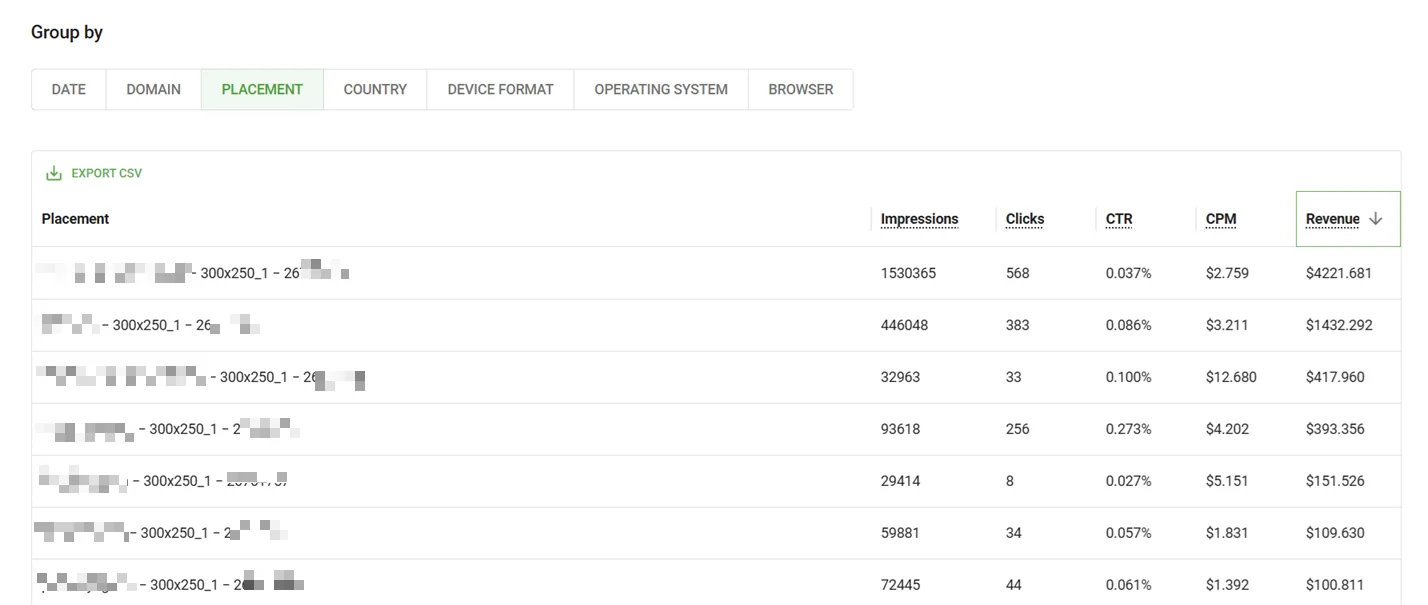
You can refuse to low-efficiency scripts. For instance, in-article blocks often perform better than footer banners. Advanced ad networks like Adsterra and Ezoic let you check how much money you make from each placement by comparing their metrics.
Improve your site’s speed, too, because faster websites get more ad views as people tend to stay longer. Also, experiment with various formats: combine Banner Ads with Direct Links or Interstitials. This allows for enhancing eCPM rates.
Harness search engines
Find topics your audience is searching for and create content around those terms. Do keyword research to find these terms. This can dramatically boost your organic traffic from Google, Bing, and other search engines.
Rich, comprehensive content often ranks better. So think of covering non-generic topics and serving valuable advice. Adsterra’s SEO strategist recommends utilizing AI-powered services to find potentially hot and trending topics.
Don’t waste your time writing about topics that people will hardly read. You need to make data-driven decisions instead of gut decisions. A good place to start with keyword research is Google Trends. You can use it to identify keywords dominating your niche over a specific period and compare the performance of specific keywords against each other.
Use tools such as Semrush and Moz to evaluate the competitiveness of a keyword. For example, entering the keyword “NBA” for the United States of America (U.S.A.) gives the results below.
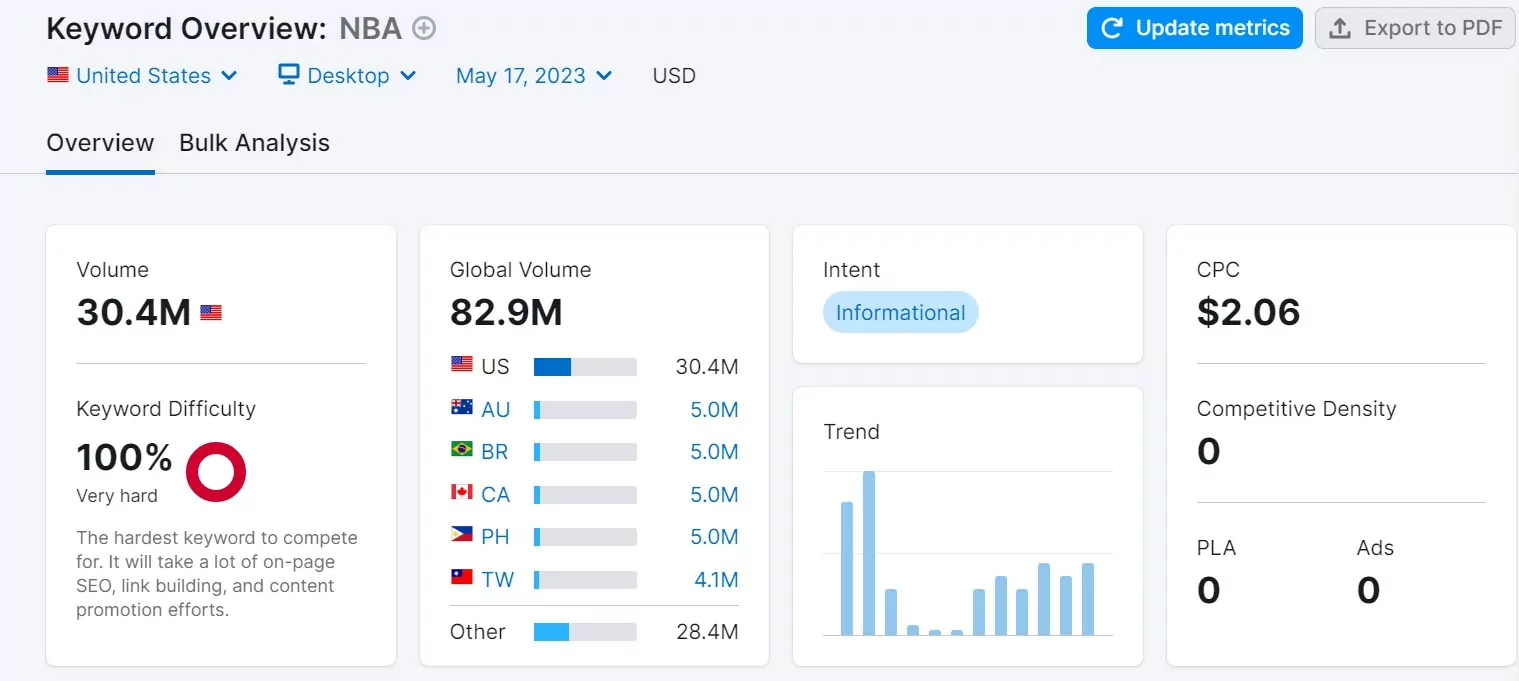
Diversify income streams
Aim to combine at least two different money-making channels. If you run Popunder scripts on your website, nothing stops you from including some referral links in posts and articles. Just as an illustration: a technology blog can use ad networks, promote tech gadgets via affiliate links, and run sponsored content. Such a combo can make you $1,000 ore more per week.
Test and adapt
Continuously analyze your assets. Which posts generate the most clicks and sales? Which days and time slots serve the most traffic, and when do visits fall? Use this data to refine your strategy. You might notice, for example, that reviews of high-ticket products earn more affiliate commissions than generic posts. Or that posts shared on Facebook drive huge traffic spikes. So you decide to create more content suited to those communities.
Use Google Analytics and A/B test features to experiment. Small changes like tweaking fonts on Native Banners or adding a call-to-action button on your email signup can have a big impact on thousands of visitors.
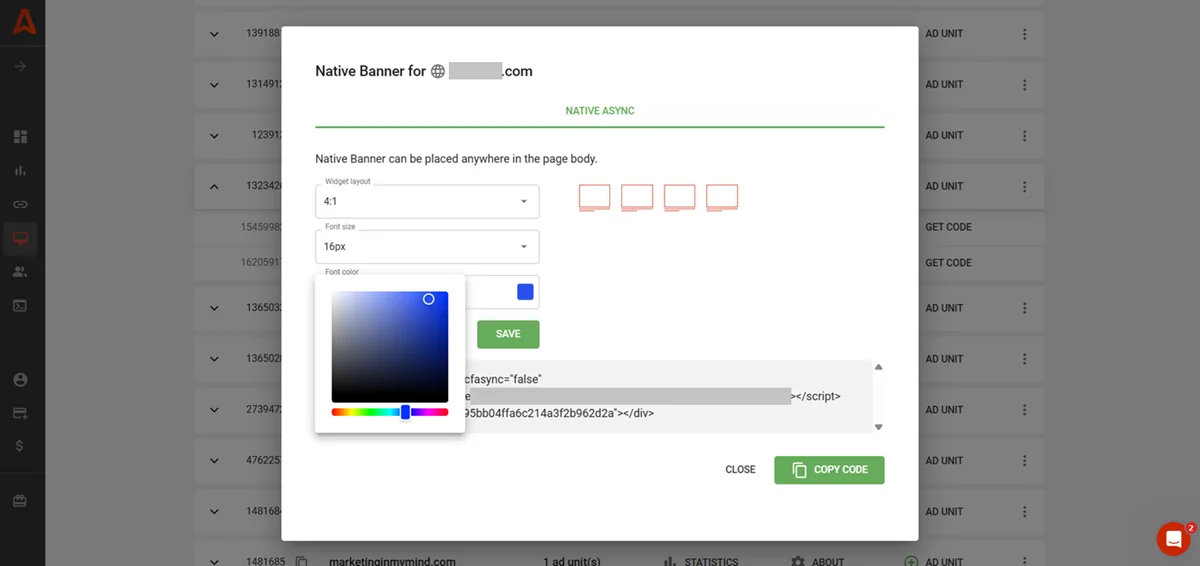
Leverage engagement, but remember to refresh traffic
Encourage repeated visits and long sessions. A larger loyal audience means steadier traffic and more buys. This could involve growing your customer base (by offering freebies or guides), engaging on social media like Instagram or Facebook, and even building a forum or private channel in WhatsApp or Telegram.
Engaged readers are more likely to click ads and buy products you recommend. But you need new audiences as much as the loyal ones. Fresh ad views convert into fresh clicks and sales, you know 😉
Use advanced advertising
Some publishers use programmatic platforms (like Ezoic or Mediavine). Some refer to innovative formats from Adsterra, like Social Bar, which combines several types of highly engaging visuals, uses animation, and noticeable CTA buttons.
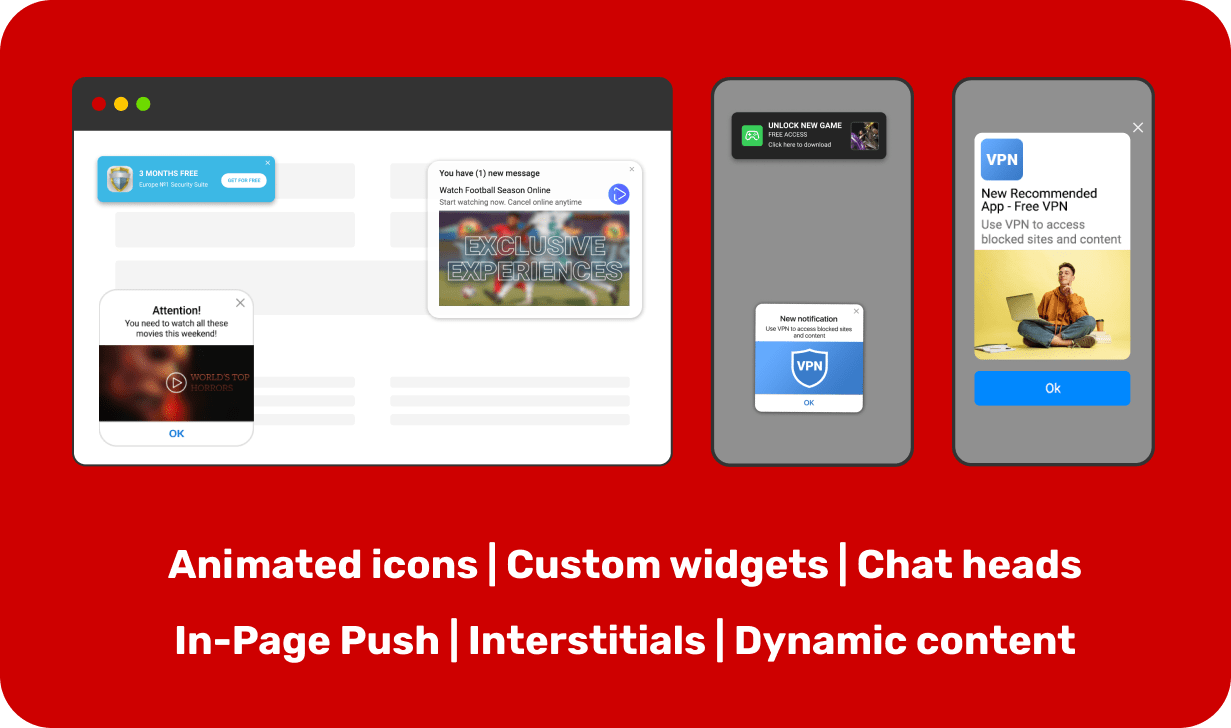
Choose ad platforms that count both impressions and conversions, supercharging your eCPM (effective earnings per 1,000 impressions).
Also, negotiate with ad networks: as your traffic grows, you can elevate revenues by optimizing ad feed. Adsterra can help you out, adding or removing some types of campaigns from your feed, optimizing your earnings.
Put business first
You make money, even if blogging is your hobby, so no cheap or misleading tricks are allowed. Never lose sight of why you’re making cash: because you give away unique knowledge. Think of each blog post as a digital product. Your ownership position will help you develop more successful projects.
Blog monetization tips
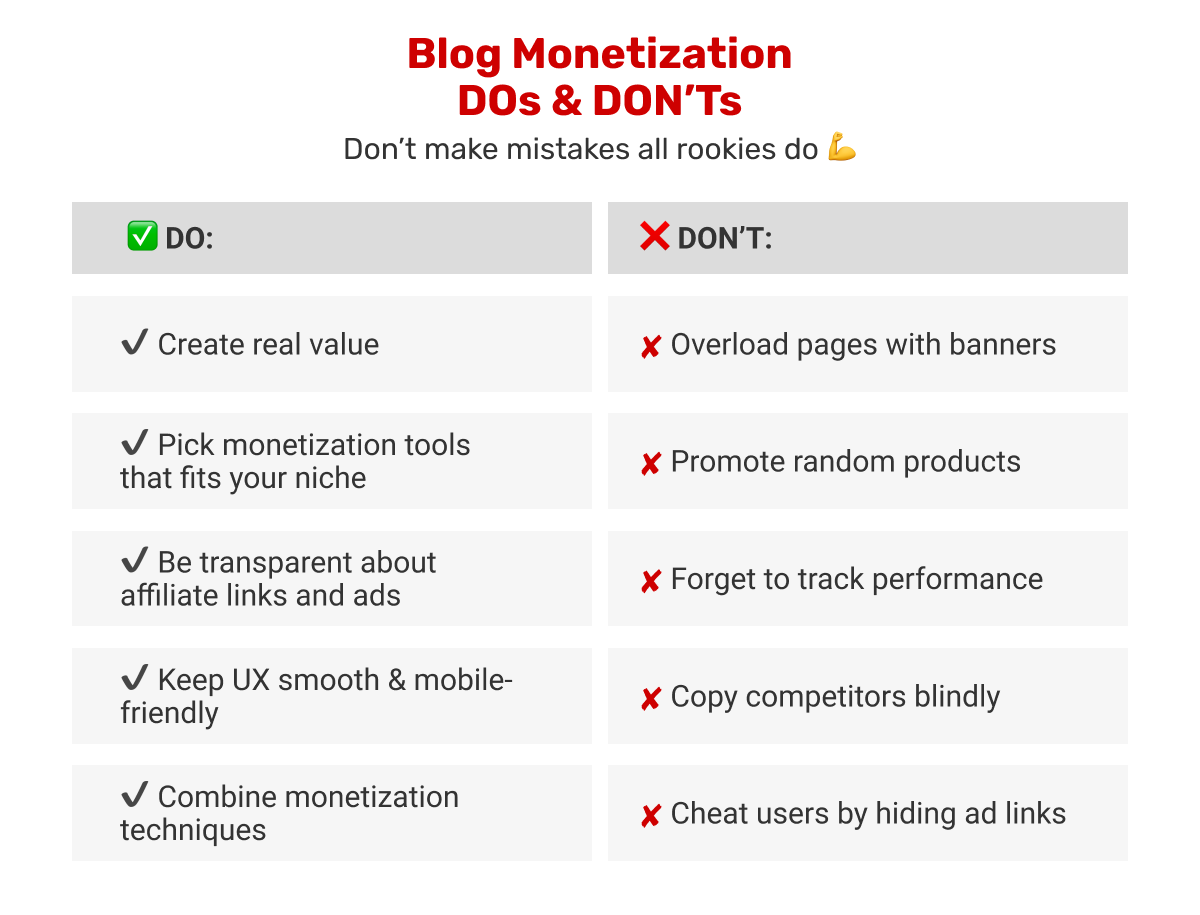
Build value and prioritize consistency
Focus on creating high-quality content that solves problems for your readers. Consistency matters: a steady schedule (weekly or biweekly posts) signals to search engines and followers that your blog is active.
Use keyword research to make each post relevant to what people search for (user intent). Make your blog posts helpful first, then monetize them. Blogging is a long game, and great content is the foundation of online businesses.
Prioritize semantic SEO rather than stuffing posts with necessary words and phrases. Other sites may beat you in SERPs at the start, but the more you hit specific search queries and entities, the more competitive and high-ranked you will become.
Supply unique value to your target audience
Understanding who reads your blog is crucial. But knowing who might also be interested in your products is even more important. Use analytics to see demographics and what topics they love. Tailor your content and ad formats to work together.
Repeatedly check how people name entities and terms related to your niche (Meta vs Facebook, Blogspot vs Blogger, etc.). Most bloggers think they make more money if they create generic posts like their competitors. This still works. But AI-search demands more from blogging. Share unique expertise that can’t be found anywhere, add practical recommendations, include product comparison tables, etc.
If your audience is mainly young adults interested in gaming, advertise relevant hardware and gaming accessories: headphones, VR headsets. Write posts that answer their key questions. The more you cater to your target audience’s interests, the better your promotions will perform.
Invest in user experience
Don’t overload your readers with ads. Place ads where they’re visible but not intrusive (e.g., above-the-fold banners, in-content blocks). Use responsive ad units that adapt to mobile (most traffic is mobile nowadays).
Make sure your site loads fast – use a caching plugin on WordPress and a WebP image converter. As noted in ad-network tips, improving site speed can boost your earnings by showing more ads. Keep a clean design and easy navigation. Satisfied users stay longer, view more pages, and thus see more ads.
Connect with those who read you
Reply to comments, join forum discussions in your niche, and be active on social media. Answering readers’ questions builds community twice as fast. Engaged readers are more likely to click your links or trust commercial posts. When you stay in touch, people are more likely to spread the word about your blog and share your posts on social media. This can dramatically increase sales for any blog.
An email list is one of your most powerful tools. Capture emails through a signup form or a free guide offer. Then share new blog posts and exclusive offers with subscribers. You could send a helpful free guide related to your niche (e.g., “5 Tips for XYZ” PDF) to entice signups.
Utilize free information wisely
Give away some free, valuable info to hook readers. This could be a free workshop or an eBook. The goal is to establish trust and collect emails for further marketing.
For example, at the end of a how-to post, you can attach a free guide in exchange for an email address. Once people subscribe, you’ve built a direct connection for future offers (coaching, courses, sponsored deals). Providing free information is a great way to build goodwill and prepare your audience for paid offerings down the line.
Don’t be shy to offer coaching or services
If you’re an expert, let your readers know. Insert offers like “Hire me for writing” or “Book a coaching session” in your website’s header (sidebar) or at the end of posts. For example, an advice blog on nutrition could offer personalized meal-planning coaching.
Many bloggers find that readers who benefit from their free advice are willing to pay for one-on-one help. Describe your services and include clear pricing – even a simple “Work with me” call to action can turn followers into clients.
Stay updated on ad tech trends
The digital advertising landscape changes fast. Keep an eye on new ad formats (like In-Page Push or Native Ads) and changing privacy rules (e.g., cookie restrictions). Consider tools or networks that comply with privacy-friendly models. Experiment with new features: Adsterra, for instance, offers In-Page Notifications and Interstitials for a fresh ad approach. Staying ahead keeps your monetization methods effective.
Balance money-making with authenticity
Always put trust a priority. Only promote products or ads that are relevant and honest. Readers value authenticity, so don’t clutter your content with irrelevant ads or random affiliates. In short, maintain a user-focused approach: the better experience your readers have, the more successful your monetization will be.
Keep your doors open for fans and community members. Even if you write for hobby purposes, become the one people can admire or rely on. It’s not enough to create a non-glossy story and demonstrate both successes and failures. Show a personality with close values: hyper-personalization is one thing that makes you stand out and makes people say, “I’m the same”.
The future of blog monetization
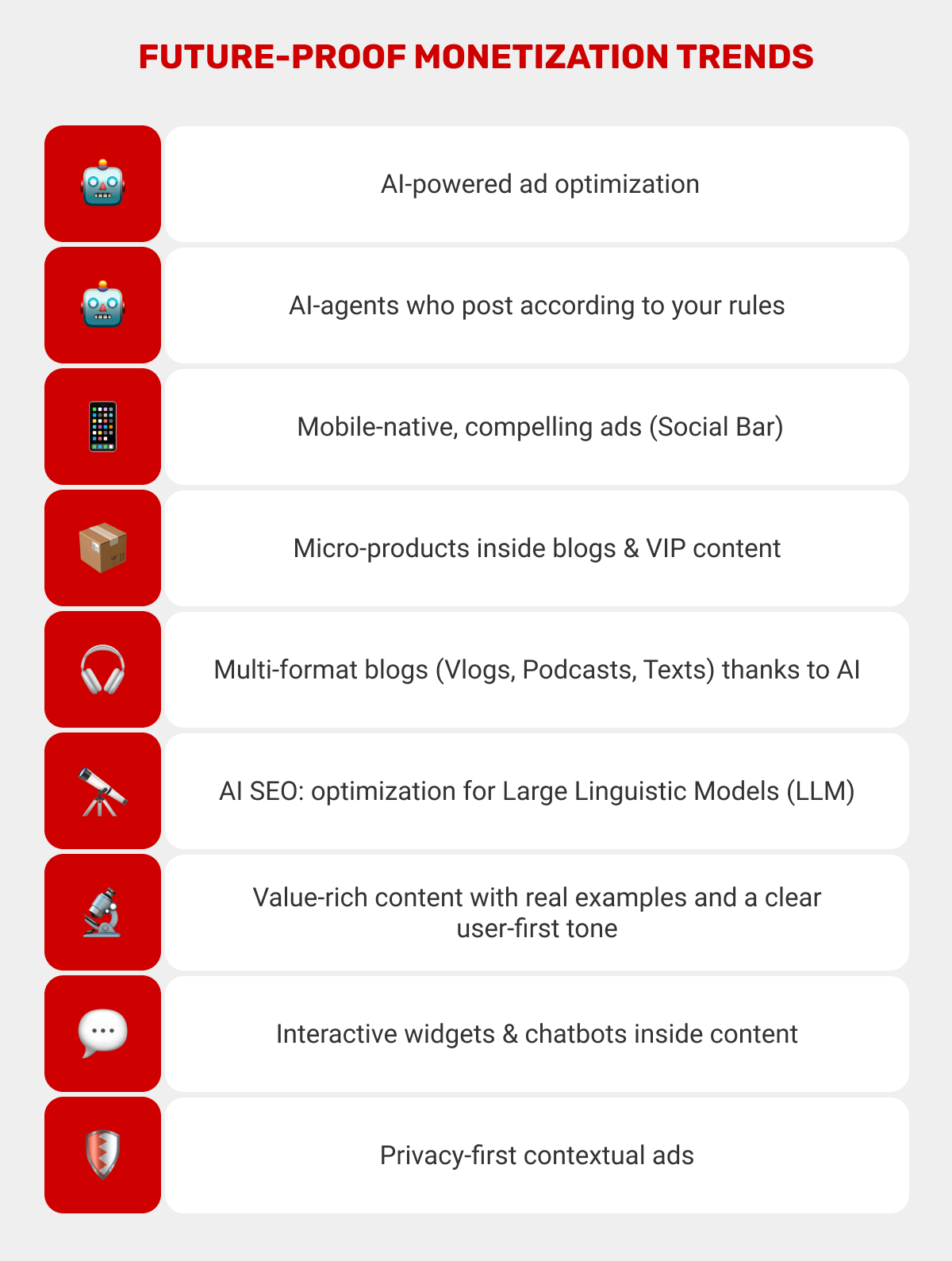
The blogging world continues to evolve, and so do the ways to make money. Explore some trends that will help you implement new ideas before they become mainstream.
AI-driven and contextual advertising
Ad networks are increasingly using artificial intelligence to improve ad message delivery. For example, Adsterra’s system uses its in-house algorithms to maximize the exposure of those ads that are more likely to convert on your website. It takes into account such factors as a blog’s geo, type, niche, and more.
Expect even smarter algorithms that target ads more precisely to each reader’s interests. Contextual advertising (showing ads relevant to your content topic) will also grow, partly due to privacy changes that limit personal data tracking. Blogging monetization will rely more on understanding content context than on tracking cookies.
Increased customization and interactivity
Bloggers who adapt content for different audiences by language, interests, location, or even natural-language (NLP) queries will make more money.
Newer formats will emerge: for instance, voice search optimization is becoming important as Google keeps developing its AI Overviews. Video blogs (vlogs) and podcasts are booming as well; if your blog expands into webinars, you can make money via YouTube ads or sponsored video content. Think interactive: quizzes, polls, or AI chatbots on your blog might carry embedded offers.
Private groups and micro-products
As trust in subscriptions grows, more readers will opt to support bloggers directly. More platforms for paid subscriptions to blogs or exclusive channels are about to appear. If you build a community (e.g., on Discord or a private site), you can charge for tiered access. This creates recurring income – powerful if done right.
Micro-products are hyper-personalized types of content you can share with your audience’s segments. They range from PDF tutorials to targeted videos sent via email marketing or in private groups. You primarily need to define the most lucrative segments and organize a series of posts
Bloggers who adapt to new technologies will rule the world. Keep learning about AI-based , new ad formats, and evolving reader preferences. Embrace these trends early: for instance, experiment with Adsterra’s In-Page Push notifications and watch how your revenue responds. Or, create an AI-based chatbot to collect emails after readers fill out a short form. You’ll then segment your newsletters, making the communication more personalized. The key is to stay flexible and keep your readers’ needs at the center.
How to monetize a blog: FAQ
Is it hard to monetize a blog?
It’s easier than ever to monetize a blog because of the helpful resources available. Do you want to run ads? You can choose from many ad networks. Do you need to start charging for premium memberships? Just install a plugin on your website to make that happen. Do you want to create online courses? Sign up on Udemy or Skillshare to make that happen.
How do you monetize your blog?
You monetize a blog by choosing methods that fit your content and audience. Common approaches include placing display ads (via networks like AdSense or Adsterra), affiliate marketing, creating sponsored content, and selling products or services. Above all this, you need to start a powerful blog ready for monetization.
How long does it take to make $1000 per month blogging?
The time it takes to reach $1000 per month varies greatly. It depends on your niche, monetization methods, and consistency. Generally, most beginners need at least 6 months tohit that milestone. If you can generate conversions and sales, you can earn $1,000 per week as our partner described in his case study.
How much money is 1000 views on a blog?
The earnings from 1,000 page views depend on the CPM rates. These rates are determined by advertisers who compete for your traffic. CPMs can range widely by niche and ad network. For instance, a blog with the US traffic could make $5–$8 per 1,000 views. The CPM rate, in its turn, relies on how many views your blog can deliver.
Which type of blog is best to earn money?
Ultimately, good writers can make money from any topic, whether they monetize a news website or a DIY robotics blog. Some of the most rewarding types of blogs are: Entertainment, Finance, Fashion and Beauty, Sports, Children Care, Food, and Gaming.
How to monetize a blog quickly?
If you have a well-established blog and decent traffic, a great and fast way is to place advertisements. As an author, you won’t need extra efforts to apply this strategy. If your credibility is high, people will click ads, and you will make money pretty quickly. Even beginners can start earning from blogs if they know simple hacks laid out by practitioners.
What are the steps to monetize a blog?
The initial step is to assess if your blog is ready to make money: you have enough traffic, your CMS or blogging platform supports various types of earning, and your blog is user-friendly and responsive. Your initiative and persistence are in the first place, whichever way you pick to monetize a blog.
Is it possible to monetize a blog if you’re a beginner?
Advertisement is the best way to monetize a blog that you just started and are yet to build a large following. There’s no single best ad network to use, but we recommend Adsterra because it gives you access to a large network of potential advertisers and supports many advertising formats.
How many views do you need to monetize a blog?
No specific number of views is needed to make money from a blog. Many ad networks don’t have minimum traffic requirements, so you wouldn’t have a problem finding willing advertisers despite low traffic at the early stages. Keep in mind that with CPM ad networks, you get paid for 1,000 ad impressions, so you will need to grow traffic to make solid cash. With eCPM, you can get significantly higher revenues if an ad impression converts into a purchase (if a user buys something after visiting the advertiser’s website).
How long can I expect for my blog to start making money?
Let’s imagine you’re starting from scratch: expect at least 3 months before making some money and up to 12 months before making a stable income. However, if you manage to create viral content, your way to monetization will be much shorter; for example, this writer made $1,200 within 2 months.
How can I make money if I don’t want to sell products or give coaching?
Different methods, such as placing ads, affiliate marketing, influencer marketing, donations, freelance blogging, etc., are the available options. One of the best ways to monetize your blogs without selling anything is by placing ads.
Which platform is better to monetize a blog?
Most successful bloggers use WordPress or Blogger. WordPress allows for more customization and scalability, whereas Blogger is more user-friendly and has an easier setup process (see how to monetize Blogspot websites in our guide). Both offer a variety of monetization options such as affiliate marketing, advertising, sponsored posts, and product sales.
Additionally, there are many other blogging platforms available.
How much does a blogger earn per month?
There is no limit to what a blogger can earn by their writing. But a good blogger using the right tools, like the ones provided by Adsterra, can earn around $20, $50, $100 or even $800 per day.
Waseem Afzal, a cricket blogger from Pakistan, turned his love for sports and cricket into a successful side hustle. He works in a medical college and writes about cricket on his blog. He uses Popunder and Social Bar to make around $30–$100 daily.
